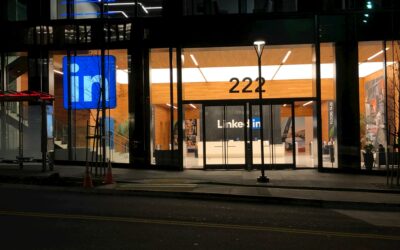Clients and customers are what make or break your business. Attracting and engaging potential customers is crucial for your business to continue growing. Many business owners might struggle to sustainably grow their business amongst the thousands of daily tasks they need to complete. Cue inbound marketing – a strategic approach to draw prospects towards your brand organically, setting the stage for meaningful interactions and conversions.
What is the inbound methodology?
The inbound methodology is a strategic approach to marketing that focuses on attracting, engaging, and delighting potential customers through valuable content and interactions. Ever do a Google search for information on how to do something, for example, “How to invest money wisely”, land on a comprehensive and useful blog post, sign up for their newsletter, receive more valuable content via email, and then receive an offer from the same company? The chances that you would accept the offer, such as making use of their financial services, are quite high because they would have already established themselves as an authority through their content. This is what inbound is about – aligning marketing efforts with the needs and interests of your target audience, ultimately driving organic traffic, leads, and conversions.
The inbound methodology is typically divided into four key stages:
1.Attract
Objective: The first step in the inbound methodology is to attract potential customers to your brand by providing valuable and relevant content.
How do we attract?
- Content Marketing: Creating blog posts, videos, and social media content that addresses your target audience’s interests and pain points. For example, a fitness coach might create a video series on home workouts for beginners.
- Search Engine Optimisation (SEO): Optimising your website and content to rank higher in search engine results for relevant keywords. A digital marketing agency might optimise their website for keywords like “marketing tips” or “SEO strategies.”
- Social Media Engagement: Engaging with your audience on social media platforms by sharing valuable content, responding to comments, and participating in conversations. For instance, a beauty brand might host live Q&A sessions on Instagram to engage with followers and answer their questions.
- Engage
Objective: Once you’ve attracted potential customers, the next step is to engage with them and build a relationship by providing valuable interactions and personalised experiences.
How do we engage?
- Personalised Email Campaigns: Sending targeted email campaigns with personalised messaging and content based on the recipient’s interests and behavior. For example, an e-commerce store might send personalised product recommendations based on a customer’s browsing history.
- Social Media Conversations: Actively engaging with your audience on social media by responding to comments, messages, and mentions. A software company might participate in Twitter chats related to their industry to engage with prospects and demonstrate their expertise.
- Live Webinars or Events: Hosting live webinars or virtual events where you can interact with your audience in real-time, answer their questions, and provide valuable insights. For instance, a financial advisor might host a webinar on retirement planning tips for young professionals.
3.Delight
Objective: The delight stage involves providing exceptional customer service and creating positive experiences to exceed customer expectations and build loyalty.
How do we delight?
- Personalised Customer Support: Offering personalised support and assistance to customers through live chat, phone support, or email. For example, an online retailer might offer 24/7 live chat support to help customers with their questions or concerns.
- Surprise and Delight Campaigns: Surprising customers with unexpected gifts, discounts, or personalised messages to show appreciation and strengthen the relationship. A subscription box service might include a handwritten thank-you note or a gift in their monthly box.
- Loyalty Programs: Implementing loyalty programs or rewards programs to incentivise repeat purchases and encourage customer loyalty. A coffee shop might offer a loyalty card where customers earn points for every purchase and receive a free drink or discount after reaching a certain number of points.
- Convert
Objective: The final stage in the inbound methodology is to convert satisfied customers into loyal advocates who promote your brand and refer others.
How do we convert?
- Customer Referral Programs: Encouraging satisfied customers to refer their friends and family to your business in exchange for rewards or discounts. A ride-sharing service might offer free rides or credits to customers who refer new riders to the platform.
- Social Proof and Testimonials: Showcasing positive reviews, testimonials, and case studies from satisfied customers to build trust and credibility with potential buyers. In this case, a software company might feature customer success stories on their website to demonstrate the value of their product.
- Follow-Up Campaigns: Following up with customers after their purchase to thank them for their business, gather feedback, and offer additional products or services. For instance, a subscription-based meal delivery service might send a follow-up email with special recipe suggestions based on the customer’s preferences and dietary restrictions.
According to inbound marketing statistics, leads gained through SEO have a close rate of 14.6 percent as opposed to just 1.7 percent with outbound. This goes to show that building an authoritative brand presence brings results!
Understanding the Attract Phase
Imagine you’re planning a weekend getaway to a new city. You’re excited to explore and experience everything it has to offer, but you’re not quite sure where to start. As you begin researching online, you come across a travel blog that captures your attention with enticing headlines like “10 Hidden Gems in London” and “The Ultimate Foodie’s Guide to London.” Intrigued, you click on the articles and find yourself immersed in detailed descriptions, stunning photos, and helpful tips that paint a vivid picture of what awaits you.
In this scenario, the travel blog represents the “attract” phase of the inbound methodology. Just like the blog attracts travellers by providing valuable information and insights about the destination, businesses use content marketing, social media, SEO, and other tactics to attract potential customers to their websites and digital platforms. By offering relevant and engaging content that addresses the interests and needs of their target audience, businesses can pique curiosity, spark interest, and draw visitors into their online ecosystem.
The Attract phase serves as the initial stage of the inbound methodology, focusing on attracting strangers and turning them into visitors to your digital platforms. It involves creating valuable content and optimising your online presence to resonate with your target audience’s interests and needs.
How do we put the attract phase into action?
Craft Compelling Content
- Develop high-quality, relevant content tailored to address your audience’s pain points and interests.
- Utilise various formats such as blog posts, videos, infographics, and podcasts to cater to diverse preferences and enhance engagement.
- Ensure your content provides valuable information and solutions that resonate with your target audience.
Implement SEO Strategies
- Conduct thorough keyword research to identify relevant search terms and topics within your niche.
- Optimise your content with targeted keywords, meta tags, and headings to improve search engine visibility.
- Focus on creating informative, user-friendly content that aligns with search intent, helping your brand rank higher in search engine results pages (SERPs) and attract qualified leads.
Harness the Power of Social Media
- Develop a comprehensive social media strategy tailored to your target demographics and industry.
- Share engaging content, including blog posts, videos, and infographics, to attract and engage your audience.
- Participate in relevant conversations, respond to comments and messages, and leverage hashtags to increase visibility and drive traffic to your website.
Create Irresistible Lead Magnets
- Offer compelling lead magnets such as eBooks, whitepapers, webinars, or free trials to entice visitors to engage with your brand.
- Provide valuable resources that address your audience’s challenges and pain points, capturing their contact information for future nurturing and conversion.
Optimise User Experience (UX)
- Ensure your website provides a seamless and intuitive user experience across all devices.
- Optimise for speed, mobile responsiveness, and accessibility to enhance user satisfaction and encourage prolonged engagement.
- Implement clear navigation, visually appealing design, and concise messaging to foster trust and credibility with your audience.
Leverage Paid Advertising
- Supplement your organic efforts with targeted paid advertising campaigns to expand your reach and attract qualified leads.
- Use platforms like Google Ads, social media ads, and sponsored content to reach your ideal audience segments effectively.
- Monitor campaign performance closely and adjust your strategies based on real-time data insights to maximise ROI and optimise results.
Measure Success and Iterating
- Track key performance metrics such as website traffic, click-through rates, and conversion rates to evaluate the effectiveness of your attract phase strategies.
- Make use of analytics tools like Google Analytics and social media insights to gain valuable insights into audience behaviour and preferences.
- Continuously refine and iterate your approach based on data-driven insights to optimise results and drive continuous improvement in your attract phase efforts.
The Attract phase of the inbound methodology lays the foundation for building a robust online presence, attracting qualified leads, and fostering meaningful interactions with your target audience. By implementing proven strategies you can effectively attract and engage prospects, setting the stage for long-term business success. Embrace the power of inbound marketing and unlock new opportunities for growth in today’s dynamic digital landscape.





